-
 Bitcoin
Bitcoin $114800
-3.31% -
 Ethereum
Ethereum $3641
-5.84% -
 XRP
XRP $2.948
-6.36% -
 Tether USDt
Tether USDt $0.9998
-0.03% -
 BNB
BNB $772.4
-3.97% -
 Solana
Solana $169.1
-6.68% -
 USDC
USDC $0.9999
-0.01% -
 Dogecoin
Dogecoin $0.2056
-8.09% -
 TRON
TRON $0.3247
-0.18% -
 Cardano
Cardano $0.7239
-7.43% -
 Hyperliquid
Hyperliquid $39.71
-8.60% -
 Stellar
Stellar $0.3912
-7.84% -
 Sui
Sui $3.510
-10.17% -
 Chainlink
Chainlink $16.59
-8.03% -
 Bitcoin Cash
Bitcoin Cash $560.5
-3.65% -
 Hedera
Hedera $0.2464
-10.08% -
 Avalanche
Avalanche $22.03
-7.87% -
 Ethena USDe
Ethena USDe $1.001
-0.02% -
 UNUS SED LEO
UNUS SED LEO $8.947
0.21% -
 Toncoin
Toncoin $3.389
-2.58% -
 Litecoin
Litecoin $104.9
-5.23% -
 Shiba Inu
Shiba Inu $0.00001220
-6.67% -
 Polkadot
Polkadot $3.652
-6.10% -
 Uniswap
Uniswap $9.213
-9.05% -
 Monero
Monero $307.2
-2.93% -
 Dai
Dai $0.9998
-0.02% -
 Bitget Token
Bitget Token $4.367
-2.89% -
 Cronos
Cronos $0.1374
-6.80% -
 Pepe
Pepe $0.00001056
-8.65% -
 Aave
Aave $257.3
-7.31%
What does the continuous entanglement of +DI and -DI in the DMI indicator mean?
When +DI and -DI lines remain entangled, it signals a sideways market with no clear trend, indicating indecision between buyers and sellers.
Jun 25, 2025 at 02:00 am
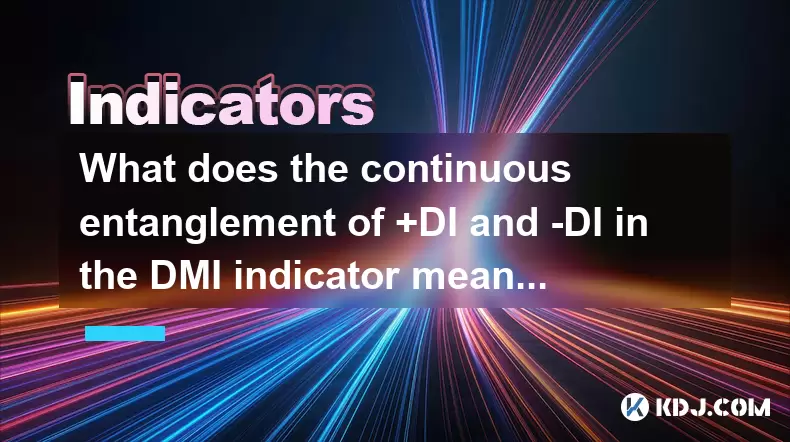
Understanding the DMI Indicator and Its Core Components
The Directional Movement Index (DMI) is a technical analysis tool used to determine the direction and strength of a trend in cryptocurrency markets. It consists of two primary lines: +DI (Positive Directional Indicator) and -DI (Negative Directional Indicator). These lines are derived from the concept of directional movement introduced by J. Welles Wilder Jr. The interplay between +DI and -DI provides traders with insights into potential shifts in market sentiment and momentum.
When traders observe that the +DI and -DI lines remain continuously entangled, it often raises questions about what this pattern signifies. This phenomenon typically occurs when neither bullish nor bearish forces gain sufficient dominance, resulting in a sideways or range-bound market.
The Significance of Entangled +DI and -DI Lines
In cryptocurrency trading, where volatility is a common characteristic, seeing +DI and -DI lines closely intertwined can be confusing for new traders. This situation suggests that neither buyers nor sellers are able to establish control over price movements. As a result, the market remains in a state of equilibrium, with frequent reversals and minimal directional bias.
This entanglement may occur during periods of low volume, lack of fundamental news, or consolidation phases after significant price moves. In such cases, traders should avoid entering trades based solely on DMI signals since the indicator becomes less reliable without a clear trend.
How to Interpret Continuous Crossovers Between +DI and -DI
When the +DI line crosses above the -DI line repeatedly, it might suggest temporary bullish pressure, but if the crossover doesn’t lead to a sustained upward move, it indicates weakness in the uptrend. Conversely, when the -DI line crosses above the +DI line frequently, it may reflect short-term bearish dominance, yet again, without leading to a strong downtrend.
These repeated crossovers often occur in highly volatile cryptocurrencies like altcoins during sideways market conditions. Traders must look beyond the DMI and combine it with other tools such as volume indicators, moving averages, or support/resistance levels to confirm whether the entanglement is likely to resolve into a trend or persist.
Practical Steps to Analyze DMI When +DI and -DI Are Entangled
To better understand the implications of entangled DMI lines, follow these steps:
- Identify the Current Market Structure: Use candlestick patterns or moving averages to determine whether the market is trending or consolidating.
- Examine Volume Levels: Low volume typically accompanies consolidation and supports the idea of indecision reflected by entangled DI lines.
- Monitor ADX Alongside DMI: The Average Directional Index (ADX), which is part of the same DMI package, measures trend strength. If ADX is below 20, it confirms weak trends and reinforces the interpretation of the DI lines being entangled.
- Avoid Relying Solely on DI Crossovers: Refrain from taking positions based only on +DI/-DI crossovers when ADX shows low values or when the market lacks direction.
- Use Additional Filters: Incorporate support/resistance zones or Fibonacci retracements to filter out false signals generated during this phase.
Case Study: Interpreting DMI in a Real Cryptocurrency Chart
Consider a chart of Ethereum (ETH) during a period of consolidation after a sharp rally. During this time, you may notice that the +DI and -DI lines oscillate around each other without diverging significantly. Simultaneously, the ADX line stays below 20, indicating no dominant trend.
In this scenario:
- Traders who rely solely on DI crossovers may experience multiple failed trades due to the lack of a sustainable trend.
- Those who wait for ADX to rise above 20 before acting may capture stronger moves once a breakout occurs.
- Combining this with volume analysis could reveal decreasing participation, suggesting the consolidation phase may extend further.
By applying these observations, traders can avoid false breakouts and focus their attention on more promising setups elsewhere.
Common Misinterpretations of DMI When +DI and -DI Are Entangled
Many traders mistakenly interpret frequent DI crossovers as signs of imminent trend changes. However, in reality, these crossovers often represent market noise rather than genuine directional shifts. Another common mistake is assuming that the mere crossing of +DI over -DI always implies a buy signal, and vice versa.
It’s crucial to remember that the DMI was designed to measure trend strength, not to act as a standalone reversal indicator. Using it without context or filters can lead to premature entries and increased exposure to whipsaws, especially in highly volatile crypto assets.
Frequently Asked Questions
What does it mean when +DI and -DI lines stay close together for a long time?
When both lines remain close, it reflects a balance between buying and selling pressure. This usually occurs in range-bound markets where no clear trend has emerged. Traders should expect choppy price action and avoid aggressive entries until a breakout occurs.
Can I use DMI alone to trade during entangled phases?
Using DMI alone during entangled phases is risky because the indicator becomes unreliable. It's advisable to combine it with other tools like ADX, volume indicators, or price action analysis to improve accuracy and reduce false signals.
Is it possible for +DI and -DI to remain entangled even during a trend?
Yes, especially in weak or early-stage trends, the DI lines may remain close while the ADX slowly rises. This suggests that although a trend may be forming, it hasn't gained enough momentum yet. Patience and confirmation from other indicators are necessary.
How can I differentiate between consolidation and a weakening trend using DMI?
A weakening trend often shows falling ADX values along with entangled DI lines, signaling diminishing momentum. Consolidation, on the other hand, may show stable or fluctuating ADX levels, suggesting the market is merely pausing before potentially resuming its prior trend.
Disclaimer:info@kdj.com
The information provided is not trading advice. kdj.com does not assume any responsibility for any investments made based on the information provided in this article. Cryptocurrencies are highly volatile and it is highly recommended that you invest with caution after thorough research!
If you believe that the content used on this website infringes your copyright, please contact us immediately (info@kdj.com) and we will delete it promptly.
- Bitcoin, Ethereum, and Investor Behavior: A New York Minute on Crypto Trends
- 2025-08-01 15:10:12
- Tether's Q2 Triumph: USDT Supply Soars Amidst Profit Surge!
- 2025-08-01 15:10:12
- Ethereum ETF Holdings: A Corporate Treasury Revolution?
- 2025-08-01 15:30:12
- Ethereum's Wild Ride: Funding Rates, Price Drops, and Retail to the Rescue!
- 2025-08-01 15:30:12
- Ethereum Under Pressure: Crypto Market Drop Explained
- 2025-08-01 15:35:11
- Ethereum ETF Mania: Inflows Surge, Market Rises, What's Next?
- 2025-08-01 15:35:11
Related knowledge

What is the difference in KDJ signal interpretation between a trending and a ranging market?
Aug 01,2025 at 03:56pm
Understanding the KDJ Indicator in Cryptocurrency TradingThe KDJ indicator is a momentum oscillator widely used in cryptocurrency trading to identify ...

Does the KDJ indicator work well for low-liquidity crypto assets?
Aug 01,2025 at 02:01pm
Understanding the KDJ Indicator in Cryptocurrency TradingThe KDJ indicator is a momentum oscillator derived from the Stochastic Oscillator, widely use...
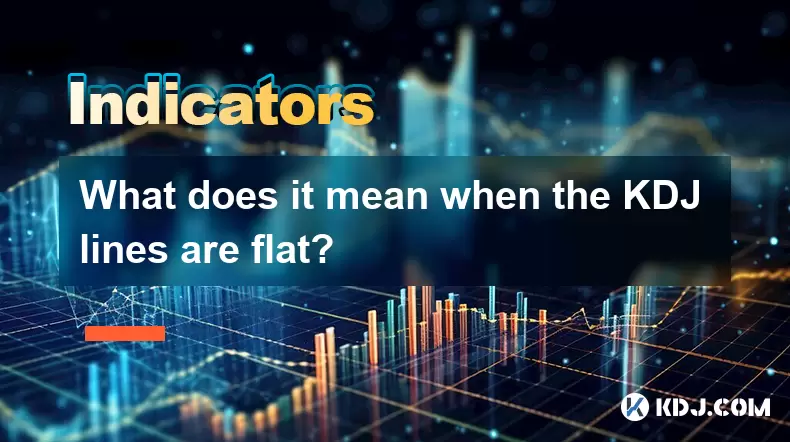
What does it mean when the KDJ lines are flat?
Aug 01,2025 at 03:22pm
Understanding the KDJ Indicator in Cryptocurrency TradingThe KDJ indicator is a momentum oscillator widely used in cryptocurrency technical analysis t...
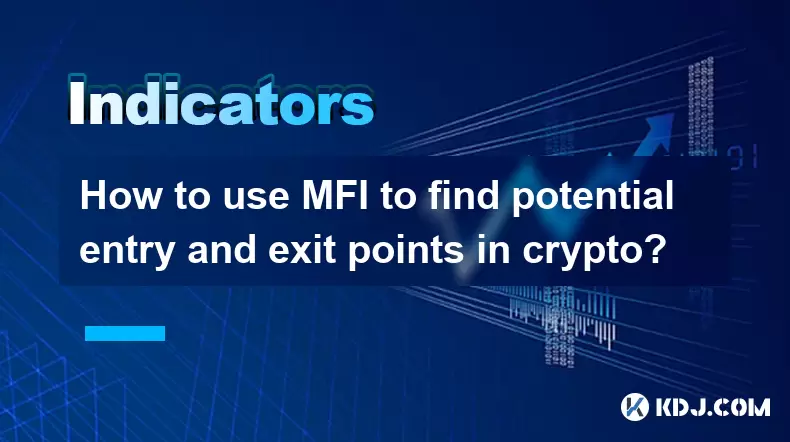
How to use MFI to find potential entry and exit points in crypto?
Aug 01,2025 at 02:35pm
Understanding the MFI Indicator in Cryptocurrency TradingThe Money Flow Index (MFI) is a momentum oscillator used to measure the strength and directio...
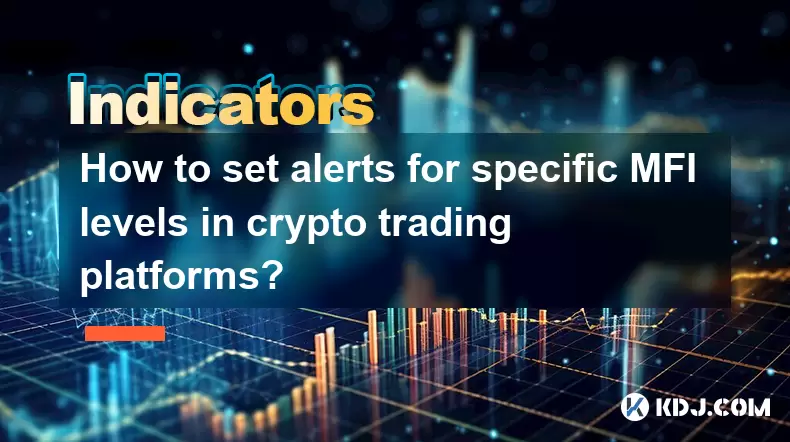
How to set alerts for specific MFI levels in crypto trading platforms?
Aug 01,2025 at 12:42pm
Understanding the Money Flow Index (MFI) in Crypto TradingThe Money Flow Index (MFI) is a momentum oscillator that measures the flow of money into and...
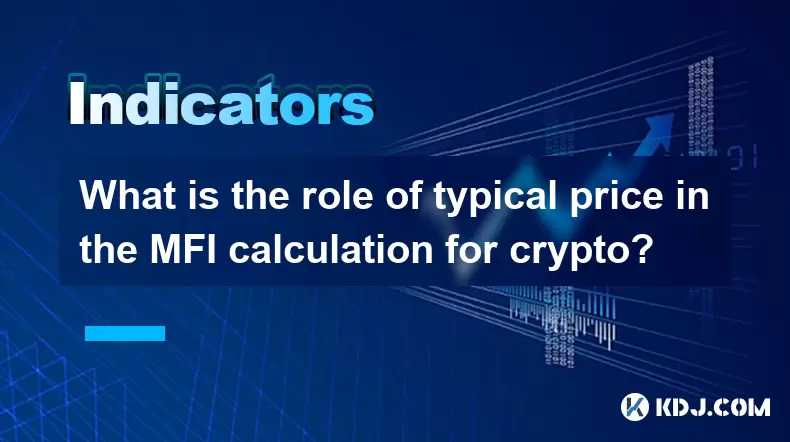
What is the role of typical price in the MFI calculation for crypto?
Aug 01,2025 at 12:21pm
Understanding the Typical Price in MFI for Cryptocurrency AnalysisThe Typical Price plays a crucial role in the calculation of the Money Flow Index (M...

What is the difference in KDJ signal interpretation between a trending and a ranging market?
Aug 01,2025 at 03:56pm
Understanding the KDJ Indicator in Cryptocurrency TradingThe KDJ indicator is a momentum oscillator widely used in cryptocurrency trading to identify ...

Does the KDJ indicator work well for low-liquidity crypto assets?
Aug 01,2025 at 02:01pm
Understanding the KDJ Indicator in Cryptocurrency TradingThe KDJ indicator is a momentum oscillator derived from the Stochastic Oscillator, widely use...

What does it mean when the KDJ lines are flat?
Aug 01,2025 at 03:22pm
Understanding the KDJ Indicator in Cryptocurrency TradingThe KDJ indicator is a momentum oscillator widely used in cryptocurrency technical analysis t...

How to use MFI to find potential entry and exit points in crypto?
Aug 01,2025 at 02:35pm
Understanding the MFI Indicator in Cryptocurrency TradingThe Money Flow Index (MFI) is a momentum oscillator used to measure the strength and directio...

How to set alerts for specific MFI levels in crypto trading platforms?
Aug 01,2025 at 12:42pm
Understanding the Money Flow Index (MFI) in Crypto TradingThe Money Flow Index (MFI) is a momentum oscillator that measures the flow of money into and...

What is the role of typical price in the MFI calculation for crypto?
Aug 01,2025 at 12:21pm
Understanding the Typical Price in MFI for Cryptocurrency AnalysisThe Typical Price plays a crucial role in the calculation of the Money Flow Index (M...
See all articles

























































































